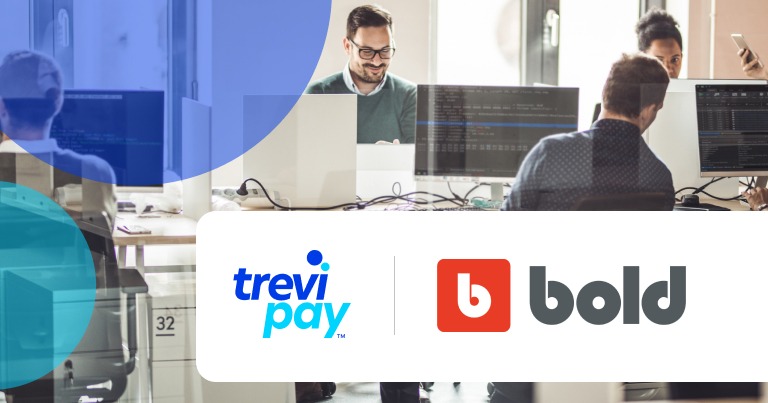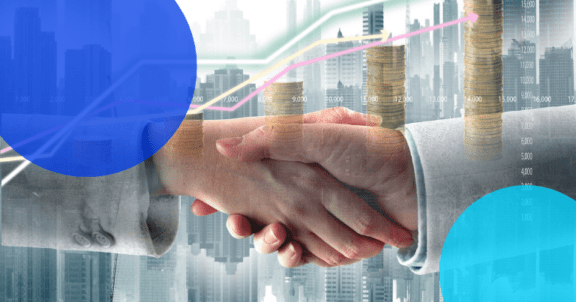Before the internet, the typical B2B buying journey was often a physical journey.
And the typical sales interaction would involve an in-person meeting.
Take the Shanghai-based American businessman Carl Crow, for example. In the early 1930s, he took a 1200-mile round trip to visit some customers in the US.
‘I have been handling the advertising of this company in China for several years. At the request of your Far Eastern Manager, I made a special trip from New York to Detroit to talk to the men in your export department…’
… She was gone a long time, but when she returned it was only to report that no one had heard of me and no one wanted to see me.
– Carl Crow, Four Hundred Million Customers (1937)
Today, both the B2B buying journey and B2B sales process largely take place on digital channels. Sales teams have fewer opportunities to engage with customers face-to-face.
This makes charting today’s typical B2B buyer journey more complicated than consulting a map.
What is B2B?
Business-to-business (B2B) refers to a broad category of different industries and players.
Any two businesses working together can be described as such. This includes manufacturers, wholesalers, retailers, small local retailers and large multinational enterprises.
However, the range of businesses this covers doesn’t make the category too broad to be useful. In fact, there are some distinct differences between B2B and business-to-customer (B2C) that justify its usefulness.
Theses differences include:
- Volume and frequency of purchases
- Number of decision-makers involved
- Financing options available
What is the buyer journey?
‘The buyer journey’ is the name for the process buyers go through before purchasing a product or service.
Of course, there is no one set journey for all buyers – there are variations of different journeys. These include in-store and online B2B eCommerce sales, too.
But what each successful journey has in common is the same or similar starting point(/s) and end point. The in-between stages – marketing channels, research, comparison shopping, discussions with sales reps, etc., – are what may differ.
Many discussions of the buyer journey focus on three main areas:
- Awareness: When buyers become aware of a brand, product, or service. This can be from contact with sales, marketing or recommendations
- Consideration: When the buyer is weighing up the brand, product or service with other factors. These can include budget, competitors, perceived benefits, etc.
- Decision: This can be inspired by one or many of the elements within the consideration stage
We will use these three stages to organise our breakdown of the B2B buyer’s journey below.
Buyer journey vs customer journey
There is crossover between the customer journey and the buyer journey, but the main difference is that the former happens after an initial purchase, whereas the latter does not.
The shared stages involved in each of these two journeys means that these terms are sometimes (incorrectly) used interchangeably.
But ultimately, customer journeys are more about:
- Increasing average order volume (AOV)
- Cross-selling
- Maintaining a healthy customer retention rate.
Buyer journeys, on the other hand, are more about gaining new customers.
The strategy and tactics used in each journey will reflect these differences. Existing customers might be reached on different channels to non-customers. For example, they are more likely to be on email marketing lists.
What is unique about the B2B buyer journey?
The basic stages of awareness, consideration, and decision are the same for both B2B and B2C buyer journeys. In fact, over 80% of B2B buyers said that their B2C buying experiences actually influence their B2B ones.
B2B buyers want the same essential advantages – clear and convenient customer experience, easy to access information, etc. But there are still some important differences to consider.
Let’s take a closer look at these.

1. Awareness phase
What is a ‘B2B buyer’?
The term ‘B2B buyer’ is almost a contradiction in terms. This is because the B2B decision-making process typically involves between 6 – 10 individuals.
These buyers might have different and competing priorities, or even be in different departments. Your sales and marketing team members need to consider this when devising strategy and tactics.
Target market channels
Before the internet, the B2B buyer’s journey included print media, word of mouth, industry events, and other in-person channels.
Nowadays, these channels have been largely taken over by multiple online ones. Paid advertising, search engines, social media, email marketing, and more.
They also include ‘dark social’ channels. These are channels that you can’t clearly attribute to a given source, like messengers, text messages, emails, etc.
For example, potential customers may see your social media post shared by one of your followers. As a result, they might make a purchase directly on your website months later.
Unless they tell you, the channels that built the buyer’s awareness will remain unknown to you.
It isn’t in your power to control the origin and order of every customer’s journey. But you can at least gain actionable insights into these by asking for your existing customers.
B2B Marketing and sales dynamics & strategy
Sales and marketing teams are essential for growth. Like sports teams and armies, they work best when they coordinate well and follow the same guiding strategy.
B2B sales strategy often leads marketing teams’ work. This can work well in the short-term, but it is not optimal for long-term strategy.
The 95-5 rule
Coined by professor John Dawes of the Ehrenberg-Bass Institute, the 95-5 rule states:
95% of business customers are not in-market to make a purchase at any given time
This means that if your sales and marketing strategy focuses mainly on the 5% who are in market, it is ignoring 95% of your client base.
‘Well, if that 95% of my potential customers aren’t in market, what’s wrong with ignoring them?’ you may wonder.
The answer to this is: because you have no way of knowing exactly when they will be in market. So, B2b marketing activities should spread out reminders to all existing and potential customers over time.
Then, many of the 5% (the in-market buyers) will hopefully begin the buyer’s journey.
And many of the other 95% will at least enter the awareness stage. Or simply be re-reminded of you, which means your business will be more likely to be top of mind when they are in-market.
2. Consideration phase
Providing easily accessible & information
Once a potential customer has become aware of your business – through either attributable or un-attributable marketing – it’s time for them evaluate your offering (and likely your competitors’ offerings, too).
At this stage in the buying process, buyer’s are still looking to gather data and better understand your products or services.
This means that you need to understand your customer’s perspective, too. What are their needs, wants, and pain points?
Creating content can influence customer decisions. Educational content and customer testimonials will help. And distributing this on the correct channels can bring many of buyers to the next stage of the sales cycle…
Typical sales interaction
Research by Gartner found that B2B buyers spend only 17% of their decision time meeting with potential suppliers.
This figure is even lower (5% or 6%) when they are comparing multiple suppliers.
This doesn’t mean that the sales process is less important. In fact, it is arguably more important, because your sales team will have less time to make an impact.
In order not to miss the relatively small window for sales opportunities this brings, sales reps can build a pipeline based on buyer personas for each lead.
3. Decision phase
Purchase decisions Aren’t always final
In B2B, a potential buyer isn’t a guaranteed buyer even after they have expressed a clear willingness to begin the purchasing process.
The large volume order and complex nature of B2B transactions means that there could still be some negotiation required.
B2B payments
B2B payments generally have a number of distinct features. These include:
- Length of lead period
- Scale of transactions
- Payment terms
- Payment methods
Each of these areas can influence customer decisions around the purchase process.
For example, being able to offer competitive payment terms is often crucial for B2B businesses. But doing so may damage your cashflow. Potential solutions for this are possible (see B2B financing’ section, below).
Also, being able to provide embedded B2B payments is increasingly essential. It can increase conversion and loyalty rates as well as provide better analytics on customer spending.
Point-of-sales (POS) integration with website
Integrating your point-of-sales (POS) system with your website or other digital channels (such as apps) has a number of advantages for the B2B buyer journey.
It removes manual data entry work and helps you keep on top of your inventory’s information across channels.
It also improves your customer data collection, which can be used for better cross-channel promotions. And it gives your customers consistent touch-points.
In short, it is an important part of B2B payments – and therefore the buyer’s journey.
B2B financing
B2B financing covers a range of different financing options.
It’s something you can consider for your own business in two different ways:
- As something you can use to increase your cashflow
- As something you can offer your clients to increase their total spend
It is not always practical to offer option 2 directly to your clients.
After all, it may increase their spend but it will decrease your working capital. This can cause problems for fulfilling orders. But outsourcing it could be extremely useful (see below, ‘Improve your potential customer’s buying journey with TreviPay’s solutions’).
Examples of popular invoice financing options include:
- Traditional bank loans
- Venture debt
- Credit lines
- Invoice financing (including invoice factoring)
Each of these has its own advantages and disadvantages. This makes some more suitable at certain times.
For example, invoice discounting is preferable to invoice factoring in some circumstances, such as when you want to retain control of your own collections process.
But in other circumstances, such as when you need to outsource your collections, invoice factoring is better.
To maximise customer access to financing options, you can seamlessly offer embedded financing at the point of sale.
B2B collections
B2B collections are an important part of the B2B buyer journey.
One study found that the average UK SME is pursuing five outstanding invoices at any given time. This amounts to GBP £8,500 – money that could be being reinvested into the business…
There are important B2B collections best practices that should be followed in order to ensure their success.
invoice processing
Many businesses can benefit from temporary increased cashflow by paying late. Others may suffer from the confusion caused by it.
In other words, processing invoices efficiently and on-time (invoice processing for B2B companies can take longer for a variety of reasons) will significantly simplify the buying journey for your customer.
Doing this efficiently and without mistakes can improve customer satisfaction. Implementing automated invoice management software, and implementing an e-invoicing process, can be a big step towards achieving this.
Improve your potential customer’s buying journey with TreviPay’s solutions
At TreviPay® we offer a number of solutions that can improve the B2B buying journey for your customers.
From our B2B ordering and payment solution with financing options that you can white-label for your customers, to invoice processing software and fraud risk management solutions.
With our credit management solution, sellers can offer alternative payment methods at checkout. It seamlessly integrates into eCommerce sites and gives buyers automated credit decisions on up to $250,000 in under 30 seconds.
Schedule a demo today to see for yourself!
Conclusion
B2B buyer journeys can begin across a range of channels. You need to build awareness across these.
The starting point of many journeys are untraceable, but you can always ask buyers how they found you later on.
Today, the average sales representative has less time for in-person lead nurturing, especially if the potential buyer is looking at your competitors, too.
Providing potential buyers with clear and detailed information will help them during the consideration stage of the buying process.
Making the purchase process simple and flexible is essential. Offering effective payments processing services at the point of sale can prevent you from losing buyers at the last moment.
Using B2B financing yourself can be a huge boost to your business cashflow. You can then offer better payment terms to your customers. And offering buyers embedded financing options is another way to increase your chances of a successful sale.
The buyer’s journey doesn’t end with payments and financing. Efficient and mistake-free collections and invoice processing help further increase customer satisfaction.






